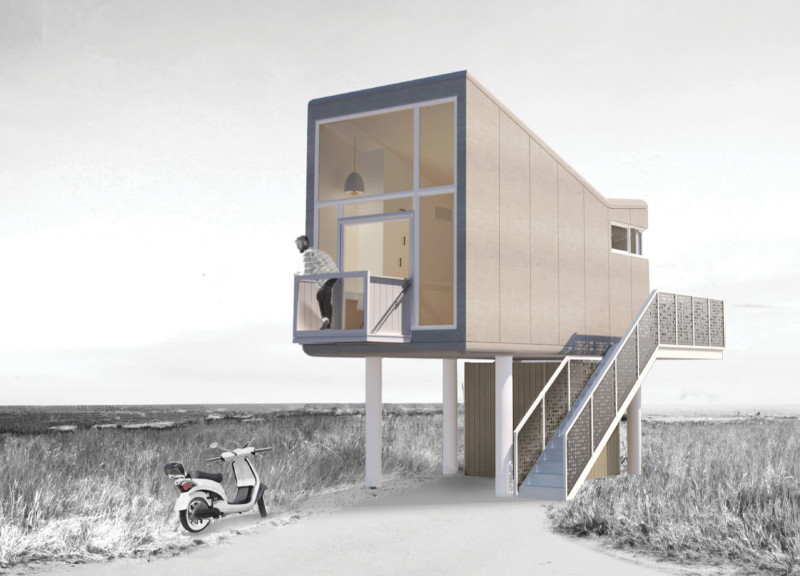5 key facts about this project
At the core of this architectural endeavor lies a clear representation of its primary function, which serves the community's needs while fostering social interaction. The design is a fusion of spaces that accommodate various activities, promoting a sense of gathering and shared experience among its users. The layout is meticulously crafted, ensuring that each area flows into the next, creating an inviting atmosphere that encourages movement and exploration. This is achieved through the thoughtful arrangement of both private and communal spaces, thus addressing the diverse requirements of the target audience.
The materiality of the project plays a crucial role in defining its character. A careful selection of materials is evident throughout the design, reflecting not only the regional context but also a commitment to environmental responsibility. This includes the use of sustainably sourced timber, durable concrete, and energy-efficient glazing. Each material contributes to the overall aesthetic while ensuring the structure's resilience against the elements. The combination of these materials creates a harmonious balance between warmth and strength, further enhancing the project's inviting nature.
Unique design approaches are articulated through the incorporation of natural light and ventilation. Large windows and strategic openings facilitate airflow and daylight penetration, reducing reliance on artificial lighting and mechanical cooling systems. The architect has skillfully integrated shading devices that not only serve practical purposes but also enhance the building's exterior visual complexity. This thoughtful detailing illustrates an understanding of the local climate and the desire to blend with the natural environment.
The spatial organization within the project is dominated by open areas that foster collaboration and creativity. These spaces are interspersed with smaller, intimate niches that allow for quiet reflection or focused work. The interplay between open and enclosed areas provides versatility, accommodating both large gatherings and private moments. The design prioritizes accessibility, ensuring that all users can navigate the space seamlessly and inclusive design principles are respected.
Further emphasizing the project’s connection to its locale, the landscape integration has been a vital consideration. Landscaping elements seamlessly interweave with the built structure, employing native plants that require minimal irrigation. Pathways and communal gardens invite users to engage with the outdoors, promoting a healthy lifestyle while enhancing the project's ecological footprint. Such considerations invite a deeper appreciation of the relationship between architecture and nature.
Overall, the project embodies a forward-thinking architectural philosophy that prioritizes human experience, environmental stewardship, and community engagement. Its design elegantly speaks to contemporary challenges in the built environment while remaining rooted in the context it inhabits. For those interested in a more detailed examination of this remarkable project, further inquiry into the architectural plans, architectural sections, architectural designs, and architectural ideas will reveal even more about its thoughtful execution and intent. Embracing these elements will allow for a richer understanding of the project’s contributions to the discipline of architecture and its surrounding community.


 Eric Anthony Gartner
Eric Anthony Gartner 























